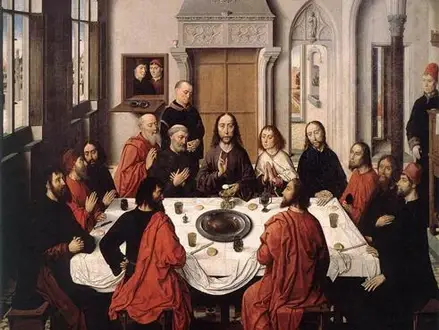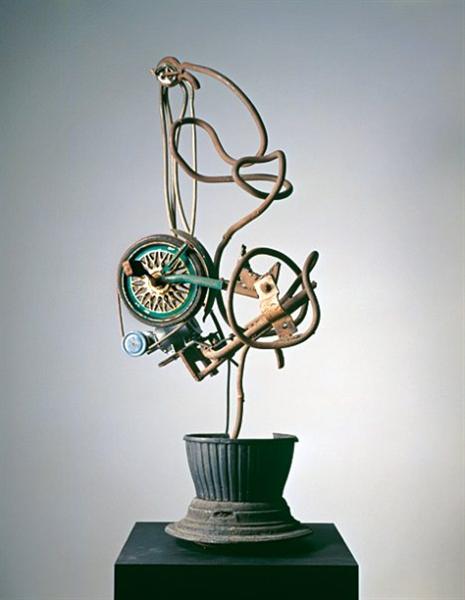Title of Artwork: “The Last Supper – from the Winged Altarpiece in St. Peter in Leuven”

Artwork by Dirk Bouts
Year Created 1465
Summary of The Last Supper – from the Winged Altarpiece in St. Peter in Leuven
A 1464–68 triptych attributed to Dieric Bouts, the Altarpiece of the Holy Sacrament or Triptych of the Last Supper is back in its original location at St. Peter’s Church in Leuven after being disassembled and reassembled.
All About The Last Supper – from the Winged Altarpiece in St. Peter in Leuven by Dirk Bouts
The central panel of the altarpiece depicts the Last Supper, which was commissioned by the Leuven Confraternity of the Holy Sacrament in 1464 from Bouts, the artist. An understanding of linear perspective can be seen in all of the orthogonals in this work. One single vanishing point is found on the mantelpiece, above Christ’s head. However, the small sideroom outside the main room also has a vanishing point, and neither of these vanishing points is on the horizon of the scene outside the windows.
Dieric Bouts was not a native of Leuven and thus did not attend the university there. He made the move from Haarlem, where he had painted the first Flemish panel painting, The Last Supper. He painted it there. Bouts introduces the concept of a group portrait around a table in this central panel, which is familiar to Haarlem council members. The Catholic Mass’s consecration of the Eucharistic host is performed by Christ in the role of a priest. The men he is surrounded by are depicted as a half-size smaller and are likely accurate depictions of prominent confraternity members. Not only Bouts, but a slew of other artists also made the trip from Haarlem to Leuven. The church was still being built at the time he was working on this triptych, and the architect, Antoon I Keldermans, had been hired by the Haarlem parish.
By including everyday details like houses on the other side of the market square visible through the windows and servants dressed in contemporary clothing beyond the central scene, Bout made a significant contribution to Flemish painting. Although these servants were once thought to be the artist and his two sons, it is more likely that they are portraits of the confraternity members who commissioned the altarpiece in the first place. This painting was copied by Aelbrecht Bouts, who neglected to include the alterations to the church and town square that had occurred since the original was painted. For the new town hall in Leuven, Dieric also created a large panel depicting justice.
For James Weale’s Flemish Primitives Exhibition in Bruges in 1902, Edward van Even of Leuven’s archival department photographed and catalogued the work in 1870.
There are two panels on each side of the Holy Sacrament Altarpiece. It has been difficult to recreate the original altarpiece due to the fact that it was taken to museums in Berlin and Munich in the nineteenth century. Abraham and Melchizedek are now believed to be on the left wing, above the Passover Feast, while Elijiah and the Angel are on the right wing, above the Manna Gathering. The Last Supper in the central panel is prefigured by all of these.
There are two Bouts paintings on display in the church: the Last Supper (1464-1468) and St. Erasmus’ Martyrdom (1465). In 1942, the Nazis took The Last Supper from its rightful owners. Following World War I, Germany was required by the Treaty of Versailles to return all of the painting’s panels, which had been sold legally to German museums over a century earlier. Museum visitors can now see a variety of artwork in the chancel and ambulatory, which were both converted to museums in 1998.
Information Citations
En.wikipedia.org, https://en.wikipedia.org/.
























